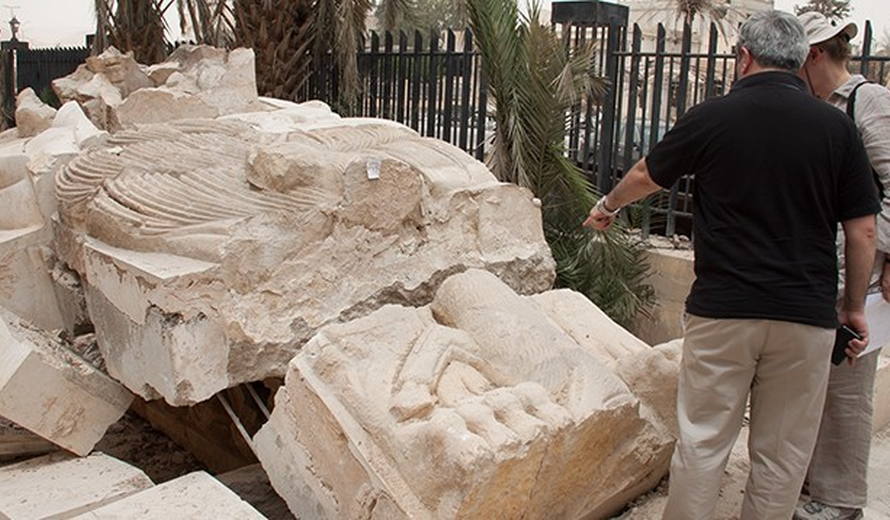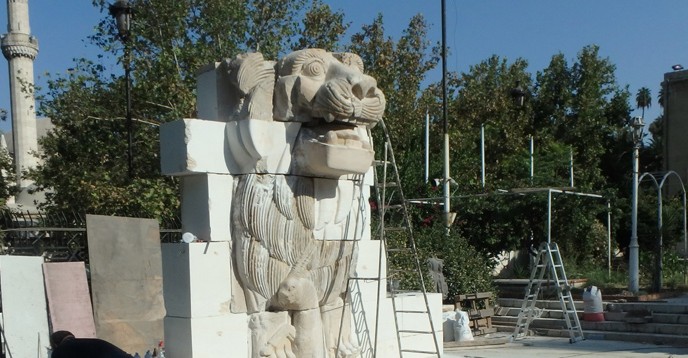“The restoration of the Lion of Al-lāt is an important achievement with a symbolic dimension,” said Hamed Al Hammami, Director of the UNESCO Regional Bureau for Education in the Arab States and UNESCO Representative to Lebanon and the Syrian Arab Republic. Ha added “Itit is part of a broader project to protect the unique cultural heritage of Syria, which unfortunately remains at risk.”.
Following the a decision unanimously adopted during the 199th session of UNESCO’s Executive Board concerning the Organization’s role in “safeguarding and preserving Palmyra and other Syrian World Heritage sites,” UNESCO sent a Rapid Assessment Mission to Palmyra from 24 to 26 April 2016, supported through its Heritage Emergency Fund.
They discovered that the Museum of Palmyra had sustained considerable damage, statues and sarcophagi too large to be removed for safekeeping had been smashed and defaced; busts had been beheaded and were lying on the ground in ruin. The fragments of the Lion of Al-lāt were moved to Damascus to await restoration.
The Museum of Palmyra housed invaluable artefacts from the UNESCO World Heritage site of Palmyra. An oasis in the Syrian Desert northeast of Damascus, the city of Palmyra was one of the most important cultural centres of the ancient world from the 1st to the 2nd century.
Standing at the crossroads of several civilizations, the art and architecture of Palmyra married Greco-Roman techniques with local traditions and Persian influences. The Lion of Al-lāt is now on display again.
Emergency Safeguarding
The Emergency Safeguarding of the Syrian Cultural Heritage project works to restore social cohesion, stability and sustainable development to Syria through the protection and safeguarding of Syria’s rich and unique cultural heritage.
This pioneering initiative, funded by the European Union with the support of the Flemish Government and Austria, and undertaken in partnership with the International Centre for the Study of the Preservation and Restoration of Cultural Property and the International Council on Monuments and Sites, protects and safeguards Syrian cultural heritage by providing technical assistance.
The project also works to monitor and document Syrian cultural heritage, develop capacity amongst Syrian experts and institutions, and mitigate the destruction and loss of Syrian cultural heritage through national and international awareness raising efforts.


